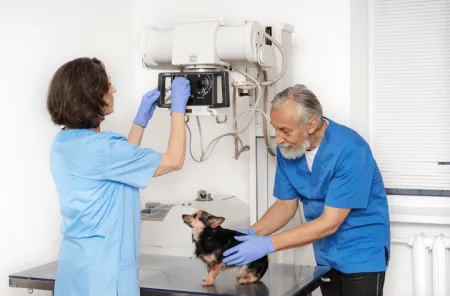Tech blogs and the tech industry will agree that a flash drive with USB 3.1 is worth purchasing. The blogs will need new content to post and new links for affiliate marketing, but do they provide useful information before people spend their hard earned money?
We can find some interesting information by comparing the differences in write speeds between USB 3.1 and USB 3.00 flash drives.
Universal Serial Buses (USB) have different speeds depending on the technology version. USB 3.1 specifications have a transfer speed of 1,250 Megabytes per Second (MB/s). USB 3.0 specifies a transfer speed of 625MB/second. It is important to note that this is only the theoretical maximum. Anyone who says ” theoretic transfer speed ” implies that all conditions must be ideal. If the computer that is sending the data has the bandwidth and horsepower to do so, then the flash drive (in this instance) will have the same speed to receive the data. But is this the real world? Is it worth purchasing a USB 3.0 USB flash drive if that’s what you want to do?
You will find some images below and a general outline of the content you’ll be reading.
- Screen shots of USB device types (USB 3.0 & USB 3.1).
- Images of benchmark software for USB and Bluetooth technologies
- Screen shots of real-world copying jobs performed on a Windows PC
You can see in the screen shots that follow a USB 3.0 and USB Flash Drive 3.1. Both flash drive use the SMI controllers for USB 3.0 or 3.1 technology. Micron Technology manufactures the high performance and quality controllers that are used in iPhones. NAND memory is MLC, which is multi-layer memory. SLC NAND is single layer memory. USB flash drive do not use SLC because it is too expensive to buy SLC and there is a limited supply. Flash drives, which are manufactured in mass quantities and designed to be inexpensive data transfer and storage devices, do not prioritize speed.
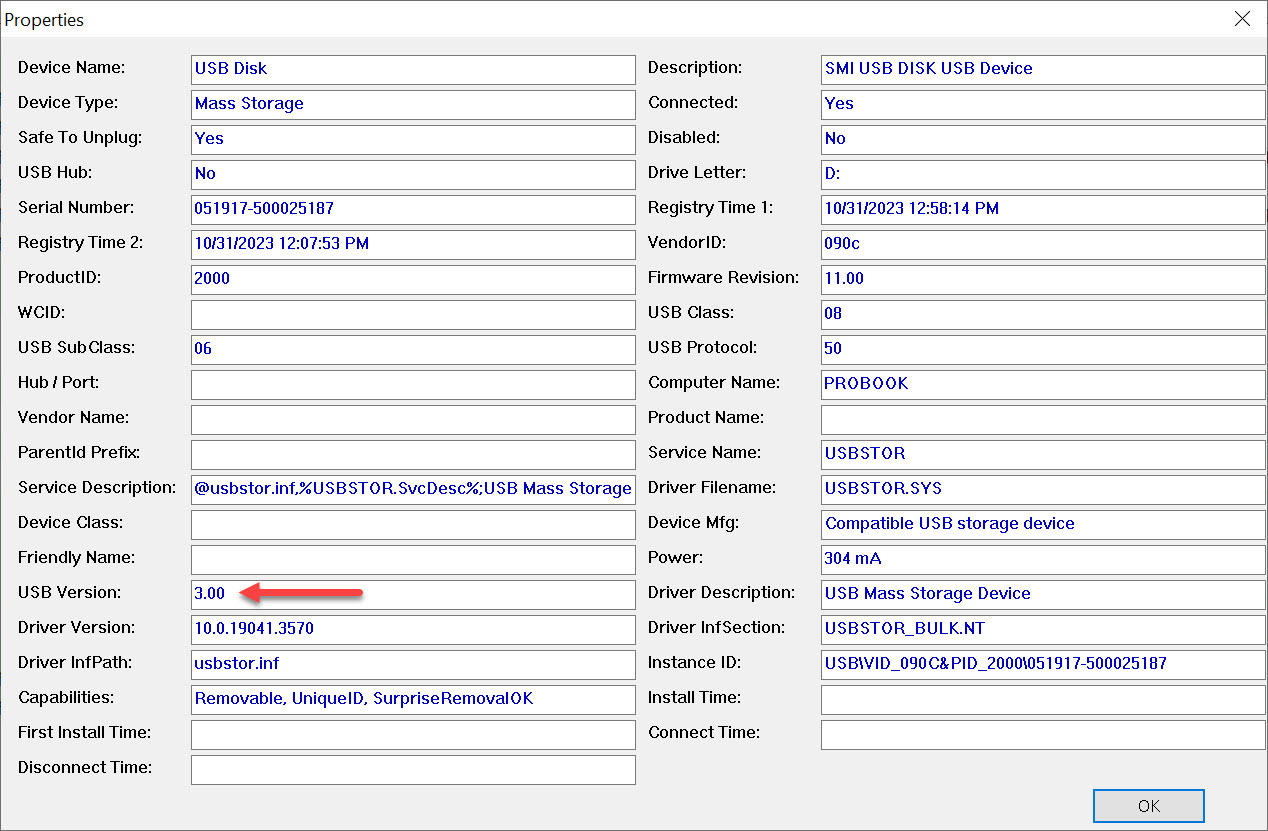
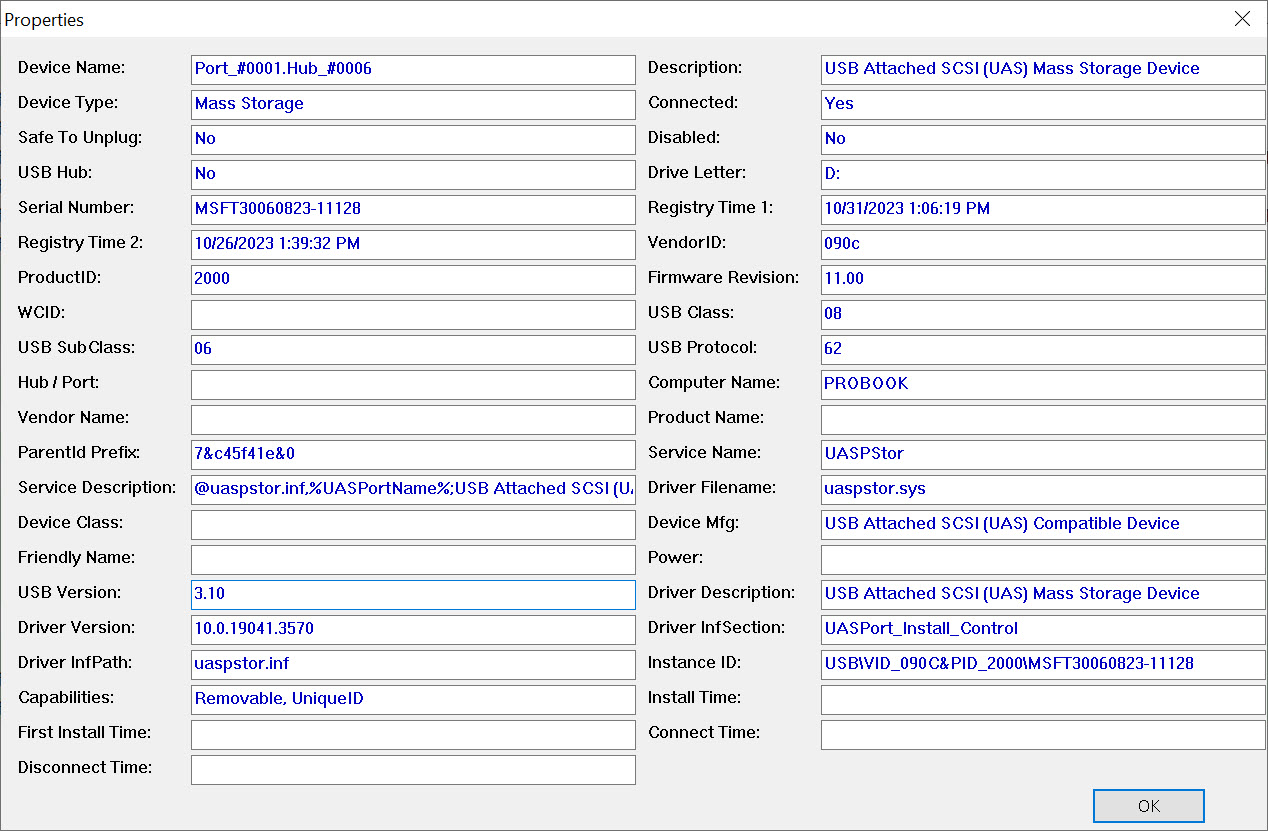
Below are benchmark speeds tests for both USB devices being discussed today.
The benchmarking program offers two settings to test the speed of a device. One setting measures the maximum theoretical speed and writes directly to the memory without accounting operating system or device overhead. Imagine this as a random writing test on any sector available on the flashdrive.
The second setting is the write sequence, which includes the overhead cache of the operating system as well as the device for placing files into the file allocation tables. It takes extra time to log the sectors written and the calculations needed to write each bit of data. The second test environment is closer to the real world.
Software designed for benchmarking speed is meant to provide an overview of a device’s capability. So, the first setting of the test is to display the theoretical maximum writing speed or the “burst” writing speed. The second setting is intended to display a slower “sustained write speed”. The benchmark software is meant to show a quick, easy snapshot of what the device is capable of – but will it be able to do it as well?
- USB 3.0 flash drives can write data at a burst rate of 67MB/second and a sustained rate of 59MB/second
- The USB 3.0 flash drive can write data at a burst rate of 244MB/second and sustained rates of 151MB/second
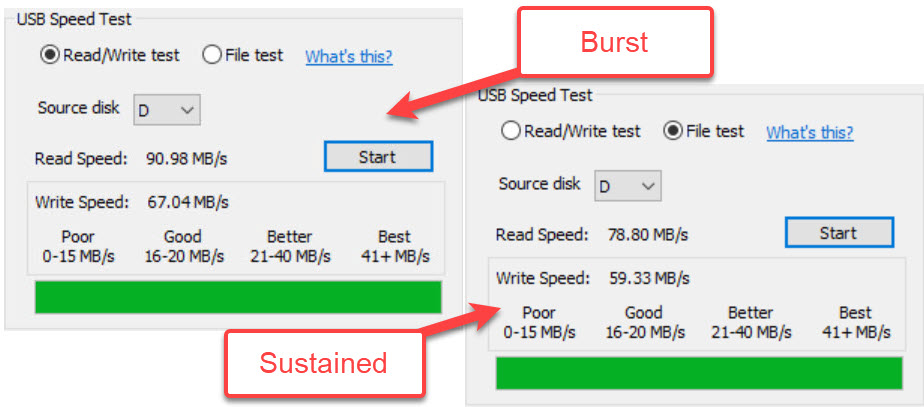
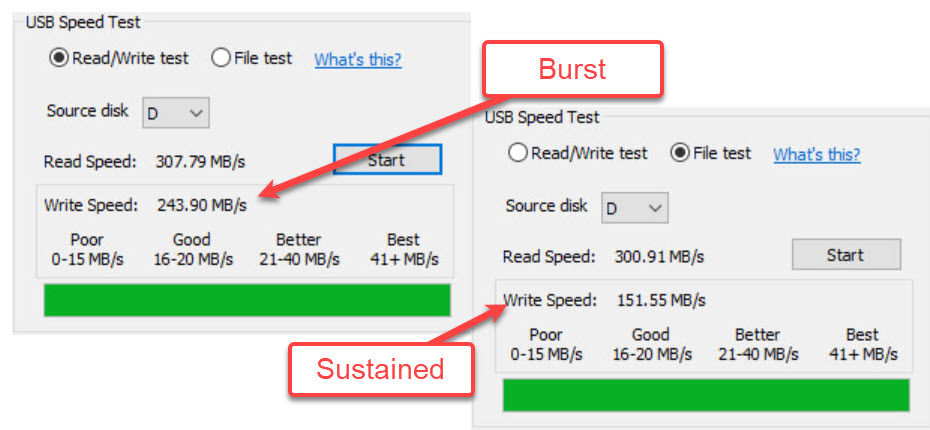
Does the device have what it takes?
When writing to 30 percent of the device’s capacity (or more), there is a significant difference in comparison to benchmark speed tests that are shorter.
If you look at the above data, it would seem that both devices are fast. The USB 3.1 is especially fast. These data are published by tech blogs to support their claim that: “Yes, a USB-3.1 USB flashdrive is worth it.”
Let’s test these flash drives again with more data. In the screenshots below, we used a 64GB USB flash drive to load nearly 45GBs. You will notice that the results were not impressive.
- USB 3.0 flash drives can write data at a burst rate of 67MB/second, and a sustained rate of 59MB/second.
- The USB 3.0 flash drive can write data at a burst rate of 244MB/s and sustained rates of 151MB/s.
The graph shows that we saw a very impressive burst of transfer speed, but the speed decreased significantly as the process progressed. In the screen shots, you can see that the USB 3.0 drive has an impressive sustained transfer speed of around 68MB/second. The speed is almost identical to what we saw in the benchmark software. The second screen capture below shows that the USB 3.1 Flash drive has an average transfer rate of only 18MB/second. It’s terrible. This is terrible.
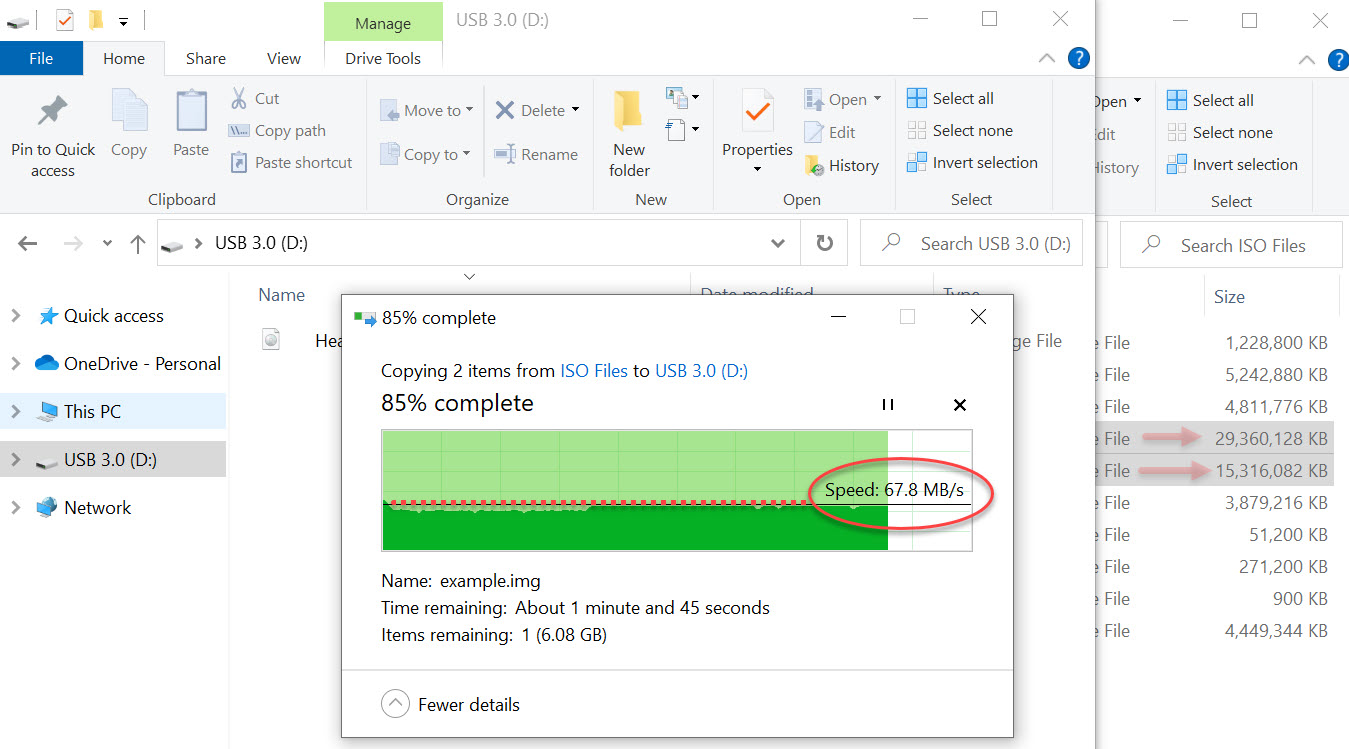
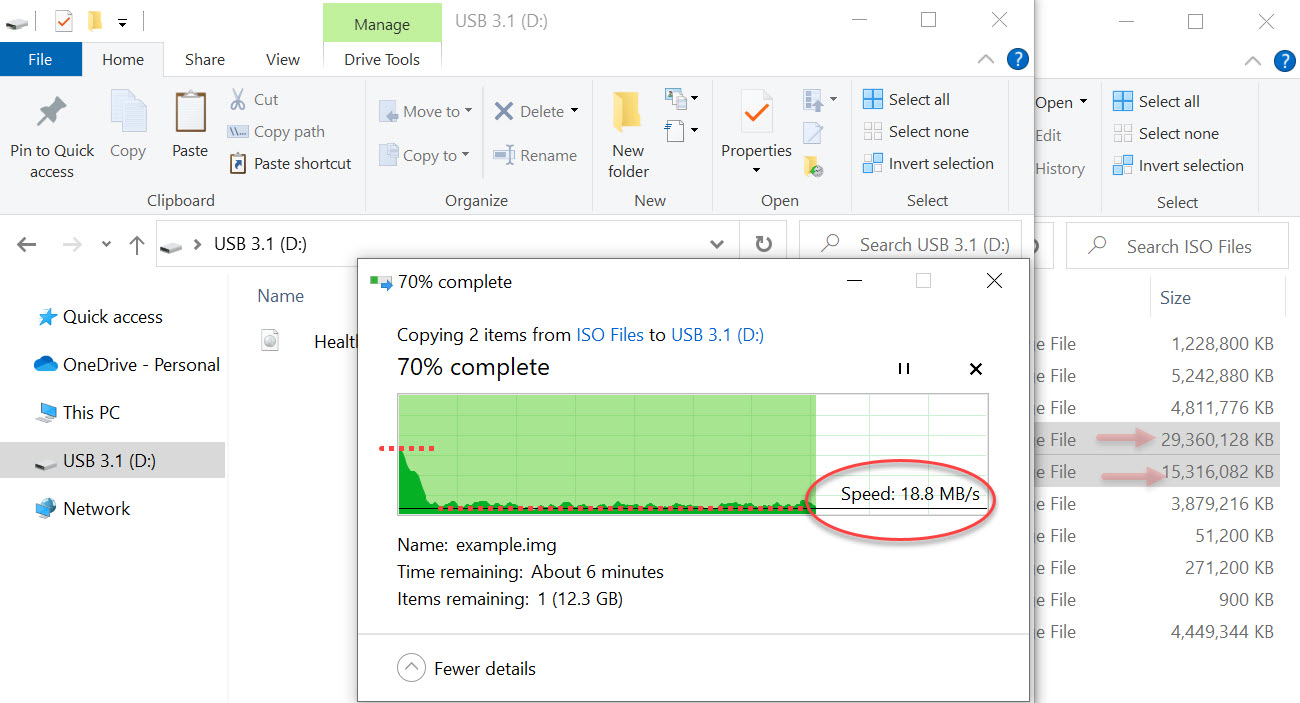
Why is there such a slow speed of transfer for USB 3.1 devices?
It was a very hot device during operation. The USB controller is throttled down to control the heat temperature and provide with a certain level while writing. It is not possible to say with certainty that this is the reason, but heat can be a major factor.
Before making a purchase, it is important to review the data and understand how the device performs with more data. Marketing materials that define write speeds are not enough. It’s true that for some applications sustained transfer speeds are not important. Or maybe the user does not want to spend the time testing before buying a single flash drive. It is worthwhile for a company to check the quality of the USB 3.1 drive before making a bulk order. Companies often use a USB flash drive duplicator copier to load data onto bulk flash drives. For example, a company might need to use a flash memory duplicator and bulk USB 3.0 flash drives for restore images that are put on flash memory by computer installation companies in the field. A company may prefer to use an offline medium for restoring data in the event that equipment breaks down and reimaging of the system is needed. This is because, many times, a computer system will need to be restored and the online connection for downloading an image file can be too slow. Or, the computer may not work properly or be infected. For those who require it, having an offline restore device such as a USB flash drive is essential.
Would it be worth purchasing a USB 3.1 flash drive?
The value of purchasing a USB flash drive depends on its performance. When it comes to USB 3.1 flash drives, the best way to answer speed questions is to try to obtain data from their manufacturer.



